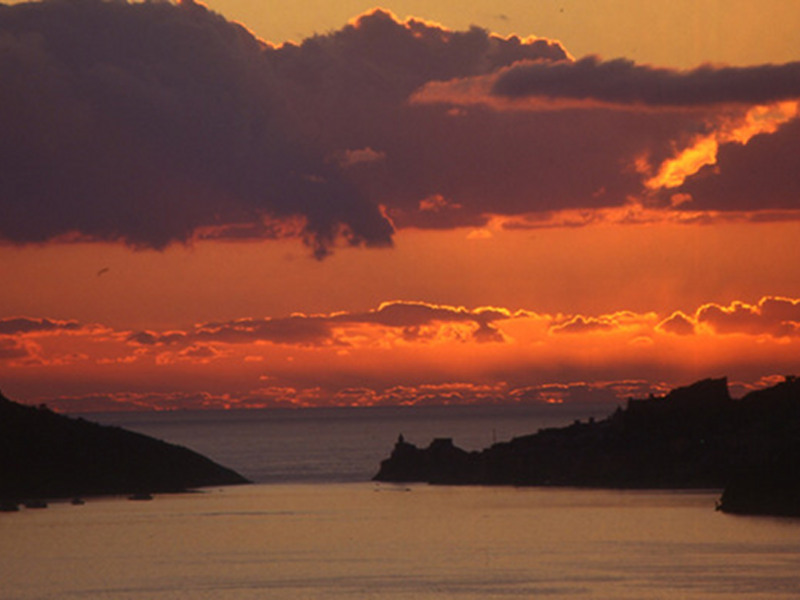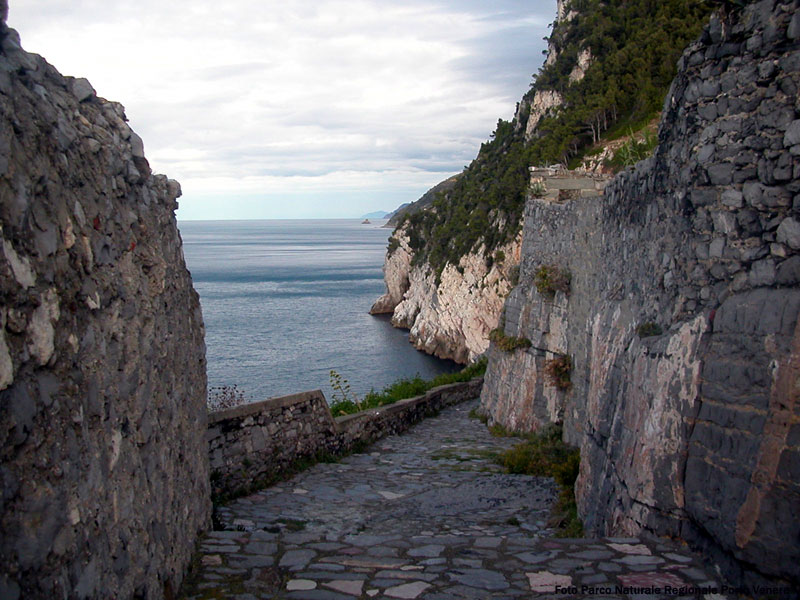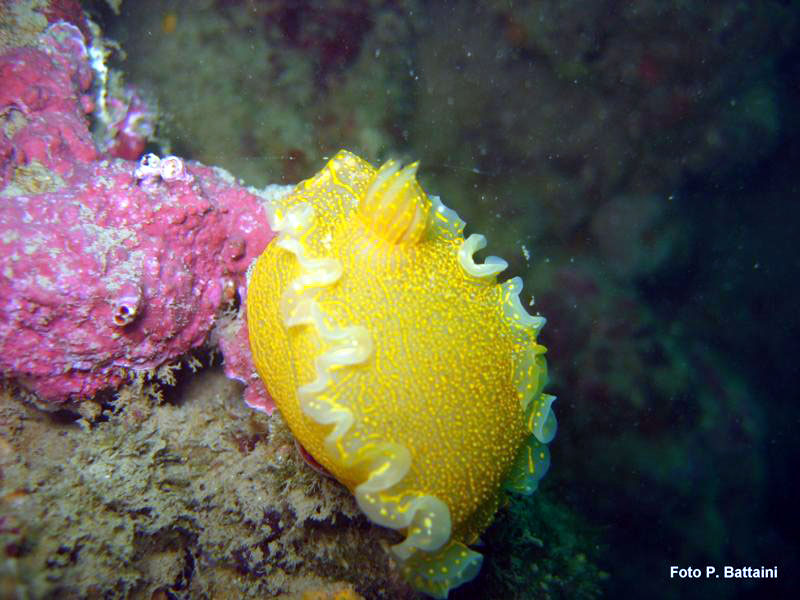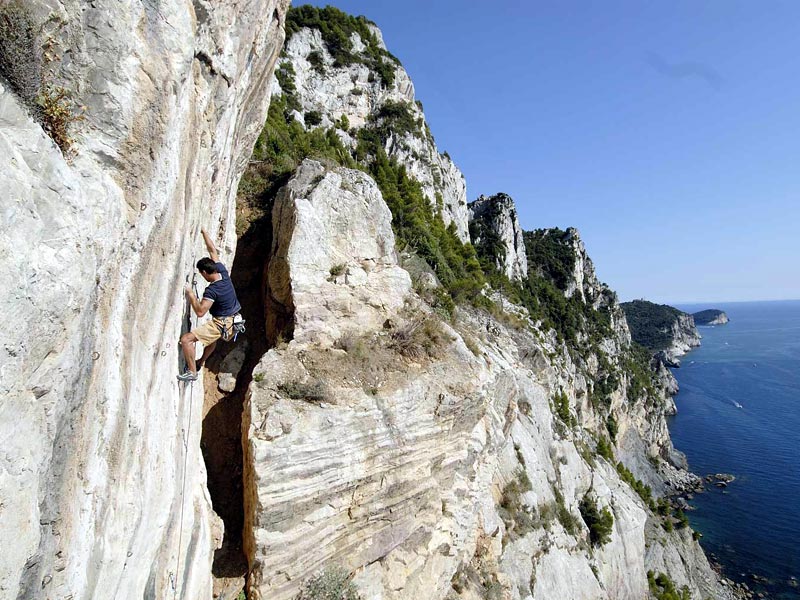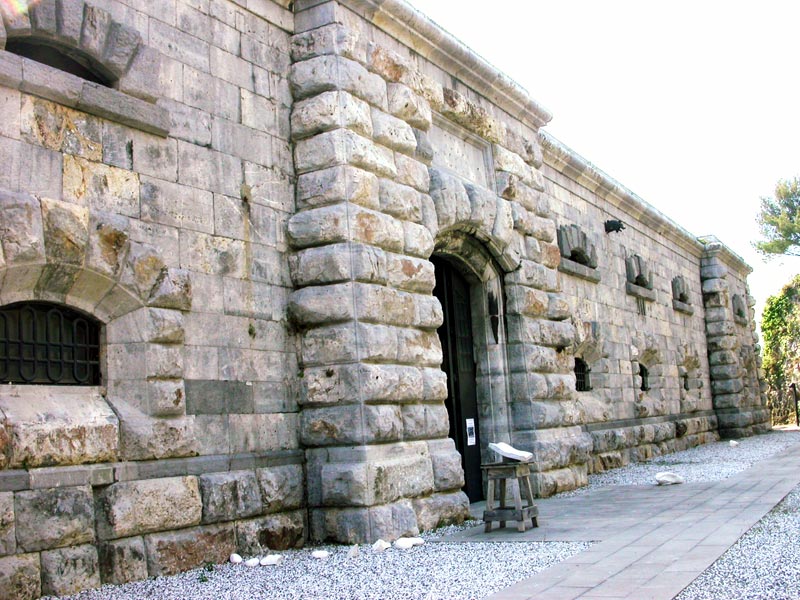Parco Naturale Regionale di Porto Venere
www.parconaturaleportovenere.itPoints of Interest
Porto Venere Archipelago
Palmaria Island
Out of the three islands forming the Archipelago, Palmaria Island is the best-known and busiest one. The island (whose name probably derives from the term "Balma" meaning Cave, rather than from the presence of fan palms) is characterized by interesting landscape values deriving from the different orographic features of its slopes: the eastern slope gradually reaches the sea and is rich in Mediterranean vegetation, while the western one is characterized by steep rocks which can reach the 188 meters of altitude. The island is covered with a wonderful Mediterranean maquis (sage, brooms, and strawberry-trees). It is crossed by a network of trails leading to the terrace on the peak of the island, where you can enjoy a unique panorama.
Furthermore, the island offers a visit to its marine caves and an Environmental Education Center open since 1994.
Tino Island
Tino, housing very interesting remains dating back to the 11th century and the church dedicated to San Venerio, is a military area. It is possible to visit it only during the feast dedicated to the Saint (13th September).
Tinetto Island
The islet of Tinetto is not rich in vegetation, but is characterized by ancient evidences of the presence of some religious communities who settled here in the past. On the western side of the island there was a small oratory dating back to the 6th century, while on the eastern side there was a bigger complex.
Historical Heritage
The Ancient Town
Tower-like houses built one next to the other, surrounding a promontory dominated by an imposing Castle and, at the borderline a Church which seems to rise in a millenary unstable balance on the rock overhanging the open sea. This is how Porto Venere looks like: luminous in the morning, when the rising sun enhances its colors - from the blue of the sea to the green of the vegetable gardens, to the pastel colors of the façades - and alabaster at the sunset, when the pink reflections of Alpi Apuane reach the gray rock.
- Further info (Italian text)
Churches
There are two churches in the town of Porto Venere. They are buildings of rare and unusual beauty that have been involved, during the centuries, in the history and events of the Town:
- San Pietro (Italian text)
- San Lorenzo (Italian text)
Doria Castle
There are still many doubts on the origins of the first fortified building defending the ancient town of Porto Venere. Historical sources providing evidences on this fortification are the registers of a notary from Porto Venere, Giovanni Di Giona (1240), the Latin verses of the notary-poet Ursone from Vernazza (1242), and the annals compiled for Repubblica Genovese, while Caffaro informs us that the consuls of the Commune of Genoa decided to build Porto Venere Castle in 1113.
- Further info (Italian text)
Military Fortifications
La Spezia Gulf is protected from the waves coming from libeccio and partly from the waves coming from scirocco. The combination of favorable natural features and defensive features highlights, from a military point of view, the immediate recognition of the natural vocation of the gulf to welcome a maritime military base.
- Further info (Italian text)
Roman Villa
The particularly favorable geographical position at the end of Varignano Vecchio inlet, with running water, easily accessible by land and by sea thanks to a small landing stage in the dockyard, is without a doubt one of the elements influencing the settlement continuity in the site, already used in the second half of the 2nd century BC.
- Further info (Italian text)
The Olivetan Monastery
The monks of Mt. Oliveto settled in the Grazie inlet on 17th June 1389, incorporating a pre-existing Gerolamini foundation including at that time only two members; in the same way, on 2nd May 1432 they obtained Tino Benedictine Abbey from Pope Eugene IV.
- Further info (Italian text)
Grotta dei Colombi
It is the most important cave of Palmaria island not only for its size, but also for the paleontological finds it has preserved. From this point of view, it is one of the most important caves of eastern Liguria.
- Further info (Italian text)
Organo del Ciurlo
The small Town of Fezzano anticipates in its structure the architecture characterizing Porto Venere: the town develops around San Giovanni Church and consists of ancient houses built one next to the other, among which little streets - less famous than Porto Venere streets - develop.
- Further info (Italian text)



